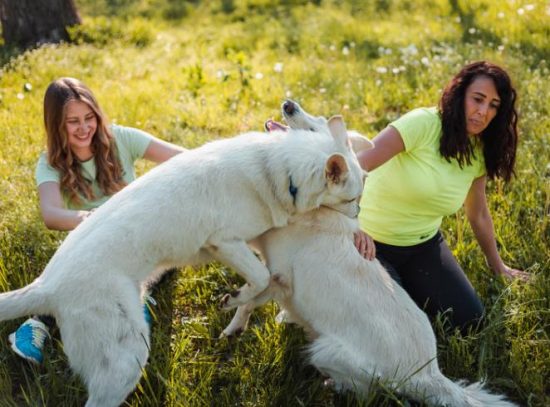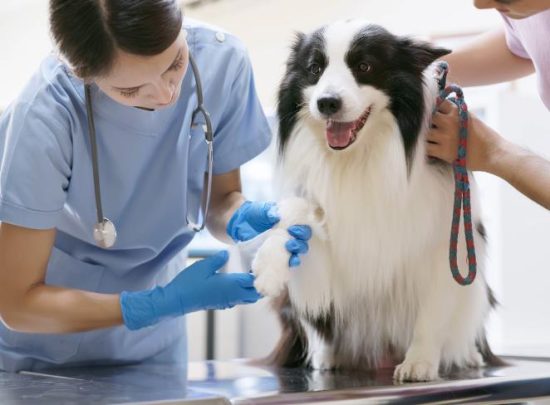How to Calm a Dog Down Instantly: Effective Techniques
How to Calm a Dog Down Instantly: Effective Techniques to Relax Your Furry Friend Quickly, Using Proven Methods for Soothing Anxious or Overly Excited Dogs.

Did you know that a staggering 72% of dogs experience anxiety at some point in their lives? Whether it’s separation anxiety, fear of loud noises, or changes in their environment, canine anxiety can manifest in a variety of disruptive behaviors. Fortunately, there are proven techniques that can help calm a dog down instantly, providing much-needed relief for both the pet and their owner. Wondering how to calm a dog down instantly? We’ve got you covered.
The starting point for calming an anxious, fearful, reactive or over-exuberant dog is to understand the cause of the reactive behavior. Slow acclimatization and familiarization is key to supporting the dog. Distance from triggers (under threshold) of the behavior is paramount and decreases as able. According to the first source, there are 7 top tips for calming a dog down, including getting the dog to relax, using no eye contact, calming the dog with touch, using movement through a calm walk, the ‘step in’ technique, removing oneself from the situation, and walking the dog away from fears.
Anxiety in dogs can be caused by separation, fear of loud noises, changes in routine and environment, and can manifest through excessive barking, whining, destructive behavior, panting, pacing, trembling, loss of appetite, and trying to hide or escape, as stated by the second source. The third source provides 10 tips for calming an anxious dog, including understanding the cause of the anxiety, recognizing early signs, building the dog’s confidence, teaching the dog to settle, creating a safe space, providing mental stimulation, using calming games, desensitization and counterconditioning, avoiding punishment, and never forcing the dog to face their fears.
Understanding Dog Anxiety

Dogs, like humans, can experience varying levels of anxiety. According to the second source, canine anxiety can stem from a multitude of factors, including separation anxiety, fear of loud noises, and changes in routine or environment. By understanding the potential causes of dog anxiety, pet owners can take proactive steps to address these issues and help their furry friends feel more at ease.
Causes of Dog Anxiety
The second source explains that dog anxiety can be triggered by a variety of situations, such as being left alone for extended periods, exposure to loud sounds like thunderstorms or fireworks, and alterations to the dog’s familiar surroundings or daily routine. Additionally, the third source notes that a lack of proper socialization during puppyhood or cognitive decline in senior dogs can also contribute to heightened anxiety levels.
Signs of an Anxious Dog
When a dog is experiencing anxiety, they may exhibit a range of behavioral cues, including excessive barking, whining, destructive behavior, panting, pacing, trembling, loss of appetite, and attempts to hide or escape. The second source emphasizes the importance of recognizing these early warning signs so that pet owners can intervene promptly and prevent the dog’s emotions from escalating further.
Importance of Predictability
Dogs are creatures of habit, and when their environment is unpredictable, it can trigger feelings of stress and anxiety. The first source notes that preparing a dog from an early age to be left alone for short periods can help them learn to relax and become the “best version of themselves.” By creating a predictable routine, dogs gain a sense of control over their surroundings, which can alleviate their anxiety, as the third source suggests.
Establishing a Schedule
Implementing a consistent daily schedule for your dog can have a calming effect. This may include set times for meals, walks, playtime, and rest. By adhering to this routine, your dog will become accustomed to the patterns and feel more secure, reducing the likelihood of panicked behavior or excessive anxiety. Gradually adjusting the schedule as needed can also help your dog adapt to changes without becoming overly stressed.
Using Music and White Noise
Soothing sound environments can play a crucial role in calming an anxious dog. As the second source explains, playing music or white noise can help create a tranquil atmosphere that soothes a dog’s nerves and reduces stress.
Calming Effects of Music
Music therapy has been found to be an effective way to help how to calm a dog down instantly and reduce excessive barking. Certain genres and compositions can distract a dog from triggers that cause how do you calm a panicked dog? by providing a pleasant auditory environment. Many pet owners have had success using playlists and apps specifically designed to what can i give my dog to relax him? through soothing, calming music.
Benefits of White Noise

In addition to music, what is a natural sedative for dogs? can also be effective in calming an anxious dog. White noise can help mask unpredictable sounds, such as thunderstorms or fireworks, which can what foods make dogs sleepy? in dogs. By providing a consistent, non-threatening background noise, white noise can help and allow them to relax more easily.
Whether it’s calming music or soothing white noise, these auditory techniques can be valuable tools in the arsenal for where to rub a dog to sleep? and how to relax a dog to sleep? Ultimately, finding the right sound environment that soothes a dog’s nerves can make a significant difference in their overall well-being.
Thundershirts for Anxiety Relief
According to the second source, Thundershirts® are specialized garments that can help dogs cope with stressful situations by gently applying pressure to their body. This pressure-based therapy can make a dog feel hugged and soothe any anxieties they may be experiencing. The way Thundershirts work is similar to how humans use weighted blankets to find comfort and relaxation.
These calming wraps are designed to provide a sense of security and calm for dogs that struggle with how to calm down instantly or how to calm a panicked dog. By applying gentle, constant pressure, Thundershirts can help relax a dog and alleviate the symptoms of anxiety, such as excessive panting, pacing, or whining.
For dog owners looking for natural sedatives or foods that make dogs sleepy, Thundershirts offer a drug-free solution to help their furry companions relax and sleep. The soothing effect of the Thundershirt can be particularly beneficial for dogs that become anxious during loud noises, travel, or other stressful events.
While Thundershirts are not a cure-all for canine anxiety, they can be a valuable tool in a comprehensive anxiety management plan for dogs. As always, it’s important to consult with a veterinarian or animal behaviorist to determine the best approach for your individual dog’s needs and how to relax a dog to sleep.
How to calm a dog down instantly?
Effectively calming an anxious or overexcited dog is crucial for its well-being and your peace of mind. Exercise and mental stimulation are two key strategies that can help soothe a dog’s nerves.
Exercise and Playtime

Regular physical activity is essential for burning off excess energy and releasing endorphins that can help reduce a dog’s anxiety and stress levels. Taking your canine companion for a brisk walk, playing fetch, or engaging in other fun activities can go a long way in calming a panicked dog and helping them feel more relaxed.
Mental Stimulation
In addition to physical exercise, providing your dog with mental stimulation is equally important for calming an anxious dog. Engaging their minds through puzzle toys, training sessions, or other challenging activities can prevent boredom and the resulting restlessness or destructive behaviors resulting from a lack of mental engagement. By keeping your dog’s mind active and engaged, you can effectively calm a dog down instantly and help them feel more content and secure.
By incorporating both physical and mental exercise into your dog’s daily routine, you can create a calming and soothing environment that helps relax a dog to sleep and reduces its overall anxiety levels. Remember to consult with your veterinarian or a professional dog trainer to develop a comprehensive strategy that addresses your canine companion’s unique needs and triggers.
Grooming for Bonding and Relaxation
Regular grooming to calm a dog down instantly can be a natural way to soothe an anxious dog. Brushing the dog’s coat releases endorphins, which can reduce stress and promote relaxation. Grooming also provides a bonding experience between the dog and its owner, which can further contribute to the dog’s sense of security and comfort.
By incorporating regular grooming sessions into the dog’s routine, owners can create a calming and comforting ritual that helps their furry friend feel more at ease. The gentle touch and rhythmic motion of brushing can have a soothing effect, allowing the dog to unwind and release any built-up tension or anxiety.
In addition to the physical benefits, the grooming process also allows owners to bond with their dogs. The one-on-one attention and positive reinforcement during grooming can help strengthen the relationship between the dog and their owner, further promoting a sense of security and trust.
By incorporating regular grooming into a dog’s routine, owners can leverage this natural and effective technique to help calm their anxious companion and foster a deeper sense of connection and relaxation.
Natural Supplements for Anxiety
Various supplements can offer soothing benefits for dog owners seeking natural solutions to calm their anxious canine companions. Some popular calming supplements include chamomile, melatonin, L-theanine, and CBD. These natural ingredients work to promote relaxation and reduce stress levels in dogs, helping them feel more at ease in stressful situations.
Popular Calming Supplements
Chamomile is a well-known herb with anti-anxiety properties that can help soothe an agitated dog. Melatonin, the natural sleep hormone, can also benefit dogs struggling with sleep disturbances or separation anxiety. L-theanine, an amino acid found in green tea, has been shown to have a calming effect on canines. Additionally, CBD oil, derived from the hemp plant, has gained popularity for its potential to alleviate anxiety and pain in dogs.
Consulting with a Veterinarian
While these natural supplements can effectively manage dog anxiety, it is crucial to consult a veterinarian before administering them. The veterinarian can provide guidance on the appropriate dosage, potential side effects, and any possible interactions with other medications the dog may be taking. It’s essential to follow the veterinarian’s recommendations to ensure the safety and well-being of your canine companion.
Desensitization and Counterconditioning

For dogs struggling with anxiety, desensitization and counterconditioning techniques can be powerful tools to help them overcome their fears. Desensitization involves gradually exposing the dog to the stimulus that triggers their anxiety, while providing relaxation techniques and positive associations. This gradual approach allows the dog to become more comfortable and less reactive to the trigger over time.
Gradual Exposure
The key to successful desensitization is to start with the trigger at a level that is well below the dog’s threshold for reacting. For example, if a dog becomes anxious at the sight of a vacuum cleaner, the initial exposure might involve simply having the vacuum cleaner in the room while the dog is engaged in a positive activity, such as playing with a favorite toy or receiving treats. As the dog becomes more comfortable, the exposure can be gradually increased, perhaps by turning the vacuum cleaner on in the same room, and then eventually moving it closer to the dog.
Changing Negative Associations
Conversely, counterconditioning aims to change the dog’s negative emotional response to a trigger by pairing it with something positive. This could involve associating the presence of a trigger, such as a loud noise, with the delivery of a high-value treat or the opportunity to engage in a favorite activity. Over time, the dog’s emotional response to the trigger shifts from anxiety to anticipation of the positive outcome. Both desensitization and counterconditioning must be approached carefully and with the guidance of a professional trainer or animal behaviorist to ensure the dog’s safety and comfort.
Creating a Safe Space
One effective way to calm an anxious dog is by creating a safe and comforting space for them to retreat to. This involves establishing a designated area in the home that the dog associates with relaxation and security. By providing a calm, cozy retreat, you can help your canine companion feel secure and at ease, even in the midst of a stressful situation.
Establishing a Calm Retreat
When setting up a safe space for your dog, consider a quiet, low-traffic area of your home, such as a corner of a room or a covered crate. Outfit the space with familiar, comforting items like a soft bed, blankets, and toys. The goal is to create a haven where your dog can retreat to when they need to relax and sleep or escape from perceived threats. Gradually acclimate your dog to this space by rewarding them with treats and praise when they voluntarily enter it.
Training to Use the Safe Space
In addition to establishing the physical space, you can also train your dog to use the safe space on cue. This involves teaching them a specific command, such as “go to your mat” or “go to your bed,” and rewarding them when they obediently retreat to the designated area. This not only helps your dog learn to self-soothe and calm themselves, but it also gives them a sense of control over their environment, which can further reduce their anxiety.
FAQs on calming a dog down instantly
What are the top tips for calming a dog down?
The top tips for calming a dog down include getting the dog to relax, using no eye contact, calming the dog with touch, using movement through a calm walk, the ‘step in’ technique, removing oneself from the situation, and walking the dog away from fears.
What are the common causes of anxiety in dogs?
Anxiety in dogs can be caused by separation, fear of loud noises, changes in routine and environment, and can manifest through excessive barking, whining, destructive behavior, panting, pacing, trembling, loss of appetite, and trying to hide or escape.
Why is establishing a consistent routine important for calming an anxious dog?
Establishing a consistent routine for dogs is important because they thrive on predictability and structure. Maintaining a regular schedule for feeding, exercise, playtime, and sleep can help reduce a dog’s anxiety.
How can music and white noise help calm an anxious dog?
Playing music or white noise can help calm an anxious dog by providing a soothing and calming environment. Music therapy can help reduce barking by distracting the dog from triggers that cause anxiety, while white noise can drown out unpredictable noises like thunderstorms or fireworks.
How do Thundershirts work to relieve dog anxiety?
Thundershirts are garments that can help dogs cope with stressful situations by gently applying pressure to their body, which can make them feel hugged and soothe any anxieties. This pressure-based therapy works similarly to the way humans use weighted blankets to find comfort and relaxation.
How can grooming help calm an anxious dog?
Regular grooming can be a natural way to calm an anxious dog. The act of brushing the dog’s coat releases endorphins that can reduce stress and promote relaxation. Grooming also provides a bonding experience between the dog and their owner, which can further contribute to the dog’s sense of security and comfort.
What natural supplements can be used to help calm an anxious dog?
Some popular calming supplements for dogs include chamomile, melatonin, L-theanine, and CBD for dogs. However, it’s important to consult with a veterinarian before giving any supplements to a dog, as they can have potential side effects or interact with other medications the dog may be taking.





